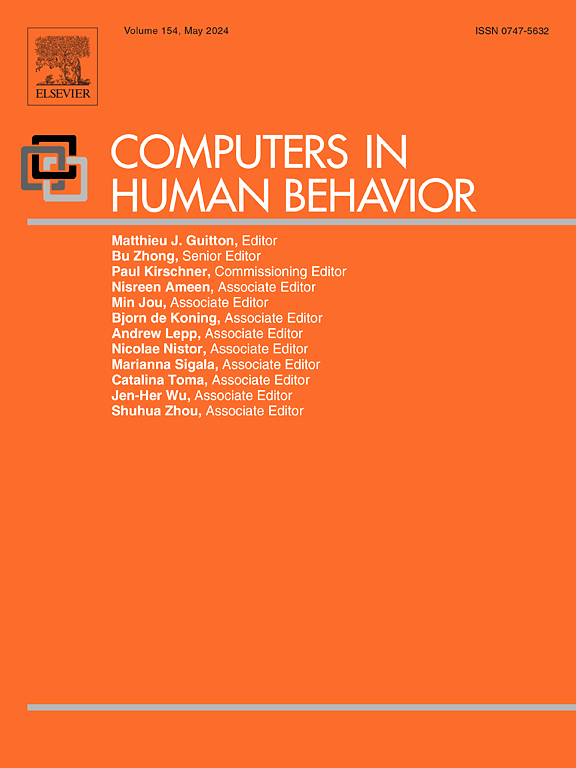“别看我!”:虚拟化身的呈现风格和凝视方向在社交聊天机器人设计中的作用
IF 9
1区 心理学
Q1 PSYCHOLOGY, EXPERIMENTAL
引用次数: 0
摘要
随着语言能力的提高,社交聊天机器人能够与用户建立密切的关系,并赋予各个领域权力。在心理治疗领域尤其如此,用户的自我表露对于人类与聊天机器人建立关系和提供聊天机器人服务至关重要。虽然各种拟人化线索在社交聊天机器人中的作用已经得到了关注,但头像呈现风格和头像凝视方向对用户自我披露的影响尚未得到很好的研究。我们进行了两个实验来检验化身的呈现风格(个人资料风格与背景风格)如何影响用户的自我披露,以及化身的凝视方向(直接与回避)是否可以调节这种关系。结果表明,背景风格(相对于个人资料风格)通过降低个人自我意识来抑制用户的自我披露。当角色配备了回避的目光时,这种关系就颠倒了。我们的研究结果表明,在聊天机器人界面设计中应该仔细考虑化身的呈现和非语言线索,以促进用户的自我表露。讨论了影响和应用。本文章由计算机程序翻译,如有差异,请以英文原文为准。
“Don't look at me!”: The role of avatars' presentation style and gaze direction in social chatbot design
With improved language ability, social chatbots are capable of forming close relationships with users and empowering various fields. This is particularly true for psychotherapy, where users' self-disclosure is crucial for human-chatbot relationship building and chatbot service provision. Although attention has been given to the role of various anthropomorphic cues in social chatbots, the effects of avatar presentation style and avatar gaze direction on users' self-disclosure have not been well studied. We conducted two experiments to examine how avatar presentation style (profile style vs. background style) can influence users' self-disclosure, and whether the avatar's gaze direction (direct vs. averted) can moderate this relationship. The results reveal that the background-style (vs. profile-style) presentation inhibits users' self-disclosure by decreasing private self-awareness. This relationship is reversed when the avatar is equipped with an averted gaze. Our results suggest that avatar presentation and nonverbal cues should be carefully considered in chatbot interface design to facilitate users' self-disclosure. Implications and applications are discussed.
求助全文
通过发布文献求助,成功后即可免费获取论文全文。
去求助
来源期刊

Computers in Human Behavior
Multiple-
CiteScore
19.10
自引率
4.00%
发文量
381
审稿时长
40 days
期刊介绍:
Computers in Human Behavior is a scholarly journal that explores the psychological aspects of computer use. It covers original theoretical works, research reports, literature reviews, and software and book reviews. The journal examines both the use of computers in psychology, psychiatry, and related fields, and the psychological impact of computer use on individuals, groups, and society. Articles discuss topics such as professional practice, training, research, human development, learning, cognition, personality, and social interactions. It focuses on human interactions with computers, considering the computer as a medium through which human behaviors are shaped and expressed. Professionals interested in the psychological aspects of computer use will find this journal valuable, even with limited knowledge of computers.
 求助内容:
求助内容: 应助结果提醒方式:
应助结果提醒方式:


